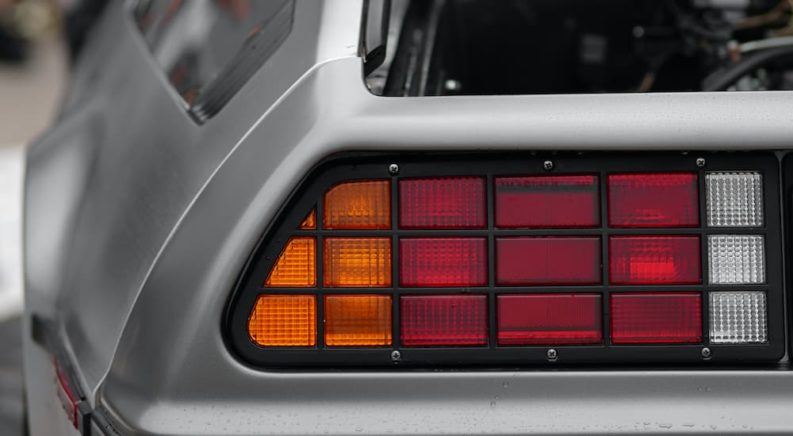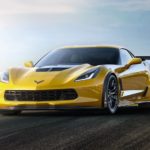The 1980s was a rough decade. Rocked by an economic recession, new EPA regulations, and a changing consumer base, vehicle manufacturers had to get with the times or suffer the consequences. The result was a whole slew of cringe-worthy cars, plus some classics that shined amongst the muck. Most big vehicle manufacturers had a little of both. For example, if you’re shopping for a classic ‘80s car at a Chevy dealer, most Camaros are safe but run as fast as you can from anything in the x-car family. Likewise, if you find yourself at a Ford dealer, an Escort is the way to go, but don’t even step foot in a Ford Pinto (sike, there aren’t any Ford Pintos left, they all caught on fire). And do not, under any circumstances, purchase a Fiat Panda. For a longer look at some of the best of what this decade has to offer, read on to see my favorite cars of the 1980s (a follow up to my favorite cars of the 1970s), ranked in six categories: performance, economy, style, cultural impact, utility, and most interesting.
Performance – 1986 Porsche 959
The 1986 Porsche 959’s origin story begins with Group B, a troop of rally cars that reached astronomical levels of performance on the racetrack, thanks to fairly unrestricted reign over the vehicles’ technology and design. A series of fatal accidents led to the discontinuation of Group B in 1986, the same year the road-friendly Porsche 959 was introduced to the public market. The Porsche 959 never got the chance to compete in the highly-publicized Group B, but it was a success nonetheless. The twin-turbocharged flat-6 engine got up to 444 hp and could rocket to a maximum speed of 200 mph, making it the fastest street-legal car at the time of its release. Due to the high cost of production, Porsche never submitted the four cars required for crash testing to the United States Department of Transportation. The coveted Porsche 959 wasn’t technically legal in the United States, but a few still made their way to the hands of the wealthiest Americans (including Bill Gates) via the grey market.
Economy – 1982 Ford Escort
The early 1980s were a pretty good time to be an economy vehicle, thanks to a severe recession that had a lot of Americans pinching pennies. Ford debuted the Escort for the 1981 model year, and by 1982, it was the best-selling car in the United States. It was the first front-wheel drive vehicle sold by Ford and also the smallest. It replaced the Ford Pinto, rising out of the flames of its fuel tank, which had a reputation for catching on fire. It was offered in the three best body styles for an economy vehicle, a 4-door hatchback, a 3-door hatchback, and a 5-door station wagon, wood paneling and all. Heavily marketed as a “world car,” the Ford Escort was going strong across the pond as well, where it had been sold since 1968. The North American Ford Escort and the European Ford Escort had precious few features in common but shared successful sales numbers. In Britain, it was one of the best-selling cars throughout the 1980s and 1990s.
Style –1985 Chevy Camaro IROC-Z
While things like mullets and swishy tracksuits were giving ‘80s fashion a bad name, the 1985 Chevy Camaro IROC-Z was holding it down with a style that embodies everything good about the decade. It had a clean design with a sprinkle of ‘80s flair here and there that bordered on cheesiness but never crossed the line (except in the commercial). The coupe body was effortlessly cool, with a ducktail spoiler that doesn’t try too hard. The inset headlights in black housing and tetris-esque taillights were delightfully ‘80s, as is the font for the “IROC-Z” graphic, proudly plastered on the doors. The best thing about the 1985 Chevy Camaro IROC, however, is that it was not just a pretty face. At a time when classic American Muscle was breathing its last breath, the IROC-Z became the first Camaro to accelerate from 0-60 mph in under 7 seconds (6.4 seconds to be exact).
Cultural Impact – DMC DeLorean
The early 1980s were a pretty bad time to be an up-and-coming, flashy sports car. The poorly-timed DeLorean was the only child of DeLorean Motor Companies (DMC), founded by former head of GM, John DeLorean. Debuting in 1981, the DeLorean undoubtedly had style. Its body was made of unpainted stainless steel and had visually stunning gullwing doors, one of the most famous features of the ‘80s icon. Unfortunately, the powertrain didn’t back up the DeLorean’s swanky looks; the V6 engine sputters out a measly 130 hp. Poor performance paired with an economic slump made for disappointing sales for the DeLorean. In 1982, things took a turn for the worse when Mr. DeLorean himself engaged in a $24 million cocaine deal, which turned out to be an FBI sting. DMC went bankrupt the same year, and the DeLorean seemed done for. After all, who would want a handsome face with soulless insides and a reputation tarnished by a drug scandal? Hollywood, of course! The DeLorean was cast as the time machine in the Back to the Future franchise in 1985 and went on to become one of the most famous cars of all time. It even acquired a nice little cult following of car enthusiasts, all without going 0-60 mph in a respectable amount of time.
Utility – 1984 Jeep Cherokee XJ
The Jeep Cherokee XJ was a high point for the Cherokee lineup. Introduced for the 1984 model year, it set a new bar for the compact SUV market. An all-around success, it could be the choice for almost any of the six categories in this article. It was designed by Dick Teague and has a strong, boxy style that was fresh but unmistakably Jeep-like. The 2.5-liter inline-4 cranks out admirable numbers, thanks in part to the Cherokee XJ’s unibody chassis design, which adds rigidity and cuts out pounds, making for a more lightweight vehicle that is safer and easier on fuel than body-on-frame styles. It was derived from the Jeep Cherokee SJ but is 1,200 lbs lighter without sacrificing interior space. A huge part of this vehicle’s utility is its versatility; it’s as well-equipped for hitting the trails as it is for doing grocery runs in the snowy suburbs.
Most Interesting – 1989 Nissan S-Cargo
Most people think of snails as little things that slowly scoot around on the ground and leave a trail of boogers everywhere they go. In the ‘80s, Nissan thought of snails as an appropriate creature to model a vehicle after. Thus, the 1989 Nissan S-Cargo was born. The name itself, “S-Cargo,” is a play on the word “escargot.” Visually, it looks like a snail. It’s taller than it is wide, making it prone to rollover accidents, but we don’t care about safety. We care about snails. The Nissan S-Cargo has unique bisected windows – a fixed portion at the top and a bottom portion that can be rolled up and down, with a bar in between reminiscent of the spirals of a shell. The sluggish 1.5-liter inline-4 got under 100 hp, but snails don’t go fast. Therefore, a chime starts going off to alert the driver whenever the S-Cargo is traveling above 60 mph. Just kidding, it actually does that because Japan had a nationally-enforced 60 mph speed limit at the time. Its fuel tank has a capacity of about 10 gallons, so drivers can count on stopping to fill up the gastropod-inspired vehicle fairly often. In summary, the 1989 Nissan S-Cargo has a lot of quirks that make it pretty impractical as a vehicle, but at least Nissan snailed, I mean nailed, with the vehicle’s theme.




